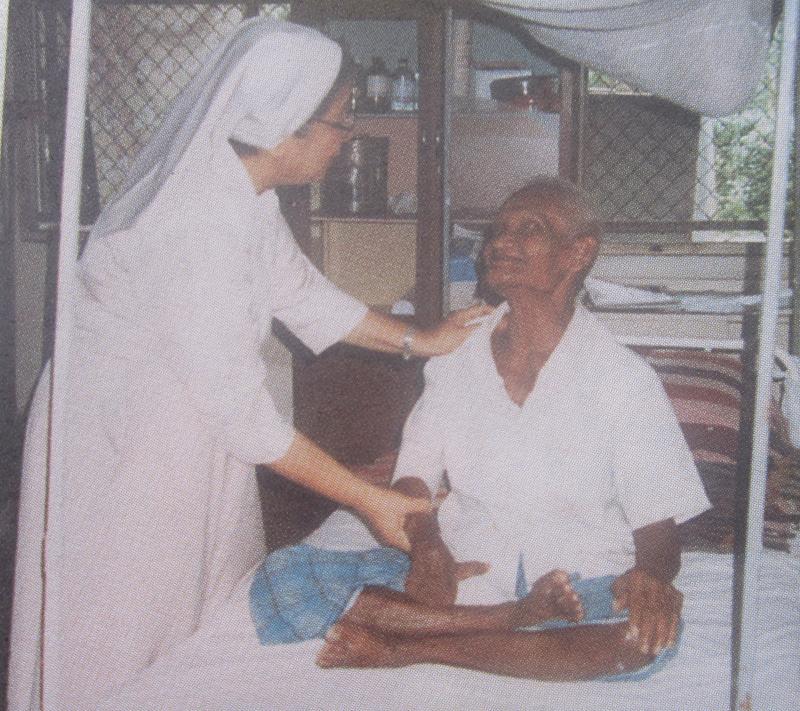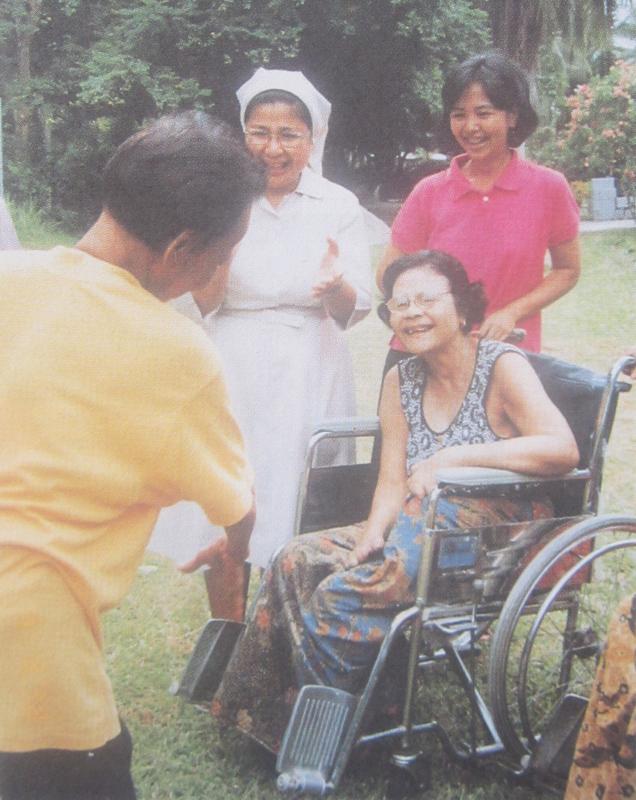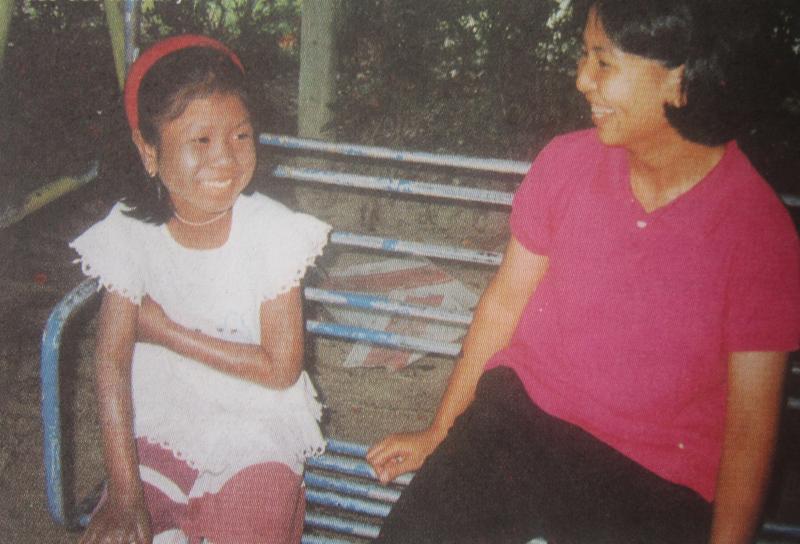The Day I Meet The Lepers
By Gee-Gee Torres, editorial assistant

Phud Hong Leprosarium
It was a long trip to Nakon Si Thammarat province in Southern Thailand. We passed through rugged limestone mountains and vast plantations of rubber, coconut and pineapple. Along the way I focused my attention at the beautiful landscape of the countryside; I didn’t want to think of the people we were going to visit in Phud Hong Leprosarium. But no matter how hard I tried, something deep inside was telling me to accept the fact that I was going to Phud Hong Leprosarium to visit lepers. I was scared. Yes, I was afraid to see a leper face to face. I was afraid to touch them or even go near them lest I get infected. I wasn’t sure if I could handle myself well if a person with a decaying nose should extend his hand to me, I would soon discover.
The Big Day
Before I know it, we were already inside the leprosarium. We entered a village with coconut trees lined along the road. I could see concrete houses with gardens. The surrounding was clean, no trace of plastic wrappers, tin cans, cigarette butts lying on the ground. I was truly amazed. What I was seeing was far different from the gruesome conditions under which Fr. Efren de Guzman has to work in Angola. I shudder when I see them as I edit his articles.
Sr. Mater brought me first to the nursery and kindergarten schools for the children and grandchildren of leper patients. We entered one of the classrooms and I saw healthy children dressed neatly in their uniforms. Then, off we went to the patients’ ward. I was forewarned to be calm if I should see a leper with no nose or with a missing ear. I braced myself as I stepped foot inside the ward. There I met a leper for the first time in my life. Surprisingly all my fears disappeared when I saw welcoming smiles on their faces. I got excited and forgot all about the missing noses and ears.
Neglected by the Government

Leper Foundation
But during the mid-70s things changed. An article about the plight of Phud Hong Leper Colony was published in the Bangkok Post. It touched the heart of so many readers. Donations from various people and organizations from all over Thailand and abroad began pouring in. and in a short period of time the lives of the people in Phud Hong were never the same again.
Educational and Development Programs
A whole array of programs was introduced to the people in Phud Hong Leprosarium. But the people at first were reluctant to participate in the various developments in the various development programs. They had got used to the dole-out system which had been adopted by the first group who helped them in the mid-70s. During that time the lepers had to be well – taken care of and provided with their basic needs because they were at a helpless stage. However with perseverance and the help of many people such as Sr. Mater of the Daughters of Charity the foundation succeeded in implementing its programs. “We encourage them to become self-reliant and help them recognize themselves as persons who can do something for themselves and for others even if they are handicapped,” said Sr. Mater.
Self-reliant People
Today Phud Hong Leper Colony is a place people talk about not because of its distressing state, but because of its transformation into a community of 229 families with its own clinic, nursery and kindergarten school and a vocational training center. Families of ex-lepers are now able to support themselves. Some of their children have finished college or vocational courses. These children are now working and providing their families with their needs. Leper patients, on the other hand, are given proper medical care and are housed in a clinic equipped with basic medical facilities.
Her name is Joy
One of the patients I met in the ward is a thirteen-year-old- girl, Joy. She looked smaller that other children of her age. I was surprised to see her among the old people. I never expected to see a child infected with leprosy. I asked Sr. Mater how she got the disease. “Joy was infected with the disease because of unsanitary living conditions and poor nutrition. Her mother brought her here because she couldn’t afford to take care of Joy,” said Sr. Mater.

P.S. Thanks to those who care to share their lives with these special people. Leper patients are given a chance to live normal and fruitful lives.
There are now four Daughters of Charity sisters working in Phud Hong Leper Colony. Two are Filipino (Srs. Mater Leal and Naty Endriga) and two are Thai (Srs. Wat and Raty). With lay partners from the village they do their weekly duties like home visits and regular rounds to the patients in the wards.
“Leprosy is not as terrifying as people often think. It is now a curable disease and not easily acquired. With proper medical treatment and sanitary care, permanents disability can be prevented.”
